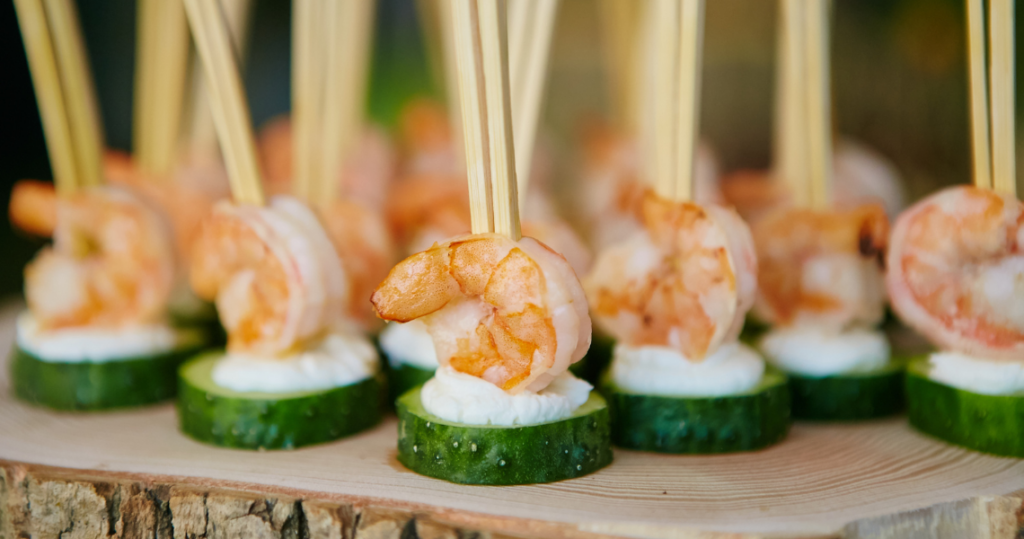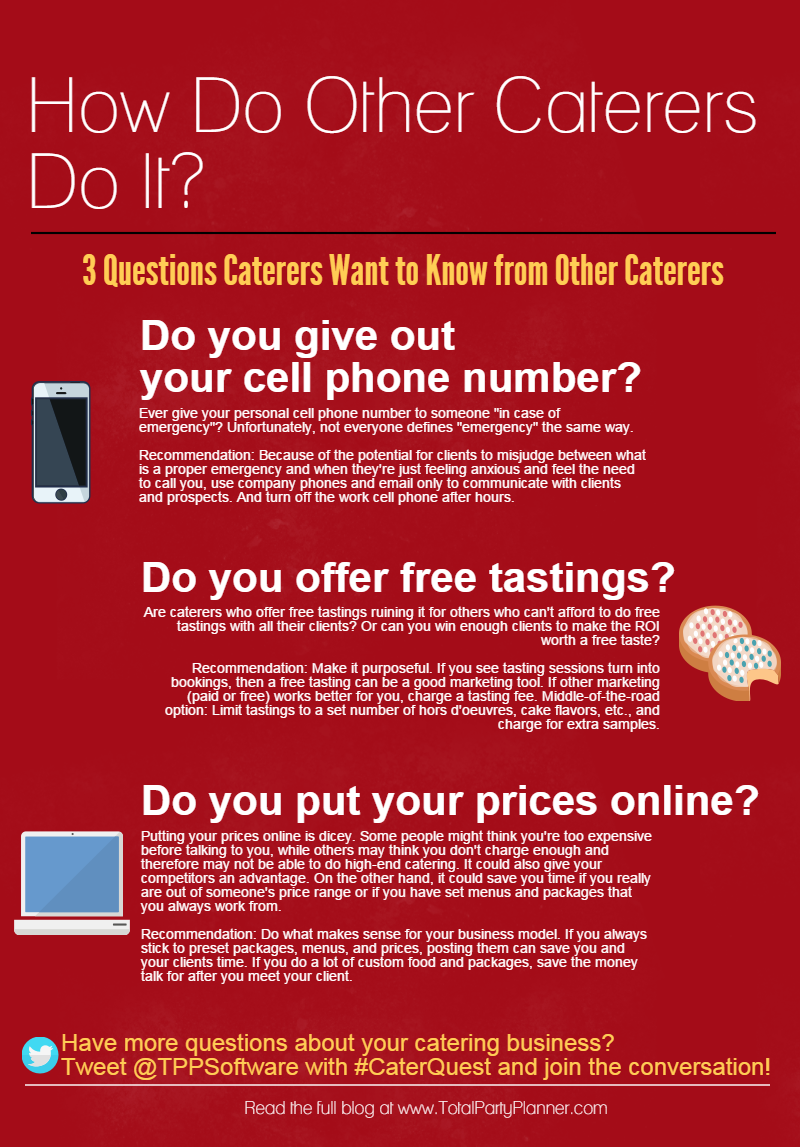Have you ever been in a situation that makes you think to yourself, “I wonder how other caterers would handle this?” You’re not alone. We’ve got 3 questions caterers have for other caterers, along with solutions we recommend based on best practices in catering and business.
Giving out your cell phone number
Ever thought about giving out your cell phone number to a client “in case of emergency”? How do you know your client will define “emergency” the same way you would define it? Leaving half the entrees on the counter back at the kitchen when your event is 45 minutes from any real grocery story – that’s an emergency. Getting a call because your client ordered French cut green beans but now she really wants them whole – that’s not an emergency. That’s probably not a discussion you want to have on your weekend at the lake. While it may seem like a good idea with some clients, because they just seem so nice (the kind of nice where you want to be their friend), it’s best to only give your cell phone to your staff. All communication with clients should go through your office phone, company email, or a work cell phone you can turn off.
Our suggestion: Don’t do it. Use company communication tools only.
Offering free tastings
Free or not free, that is the question. There is a common thought that all caterers do free tastings. Many brides walk into a tasting expecting it to be free, which may be naive on their part. After all, who is going to pay for the food the couple, or even the bridal party, comes to taste? However, there are caterers out there who offer free tastings. They consider it part of the marketing budget. Other professional caterers apply the cost of the tasting toward the final bill once a client books their event. Some caterers don’t offer tastings at all.
Our suggestion: Give product with purpose. If you see tastings turn into bookings and that’s how you attract clients, consider it a marketing tool (and make sure to ask your accountant about writing it off as an expense). If you spend money elsewhere to attract new clients, determine a tasting fee and be upfront about it. Middle-of-the-road option: Limit your tasting to X number of appetizers, two cake flavors, etc., and charge for any extra samples.
Putting your prices online
There are pros and cons to publishing your prices online, and how you run your business will determine which is the right choice for you. If you have set menus that you use for most events, it’s easier to provide your menus and prices online. It gives customers a chance to review what you offer and see if you’re within their budget before they contact you, saving both of you time and hassle. On the other hand, some people may use your prices to assume what kind of caterer you are. For example, if they think your prices are too low, they may think you can’t handle a high-end affair, and vice versa. They won’t know what your food tastes like or how you can personally enhance their event because of your experience, your personality, and your services. Publishing prices could also give your competition an edge. Once potential clients have a chance to meet you and try your food, they may be willing to spend a little more than they originally budgeted.
Our suggestion: Do what makes sense for your business model. If you rarely do custom menus, consider providing your costs online. If you do mostly custom menus, save the money talk for after you’ve met in person or at least spoken on the phone.
What questions do you have for other caterers? Join the conversation on Twitter by tweeting your questions with #CaterQuest. Or, join the conversation on TPP’s Facebook page! One more option: leave comments below. Ask the TPP community to get answers to your most pressing professional catering questions!






